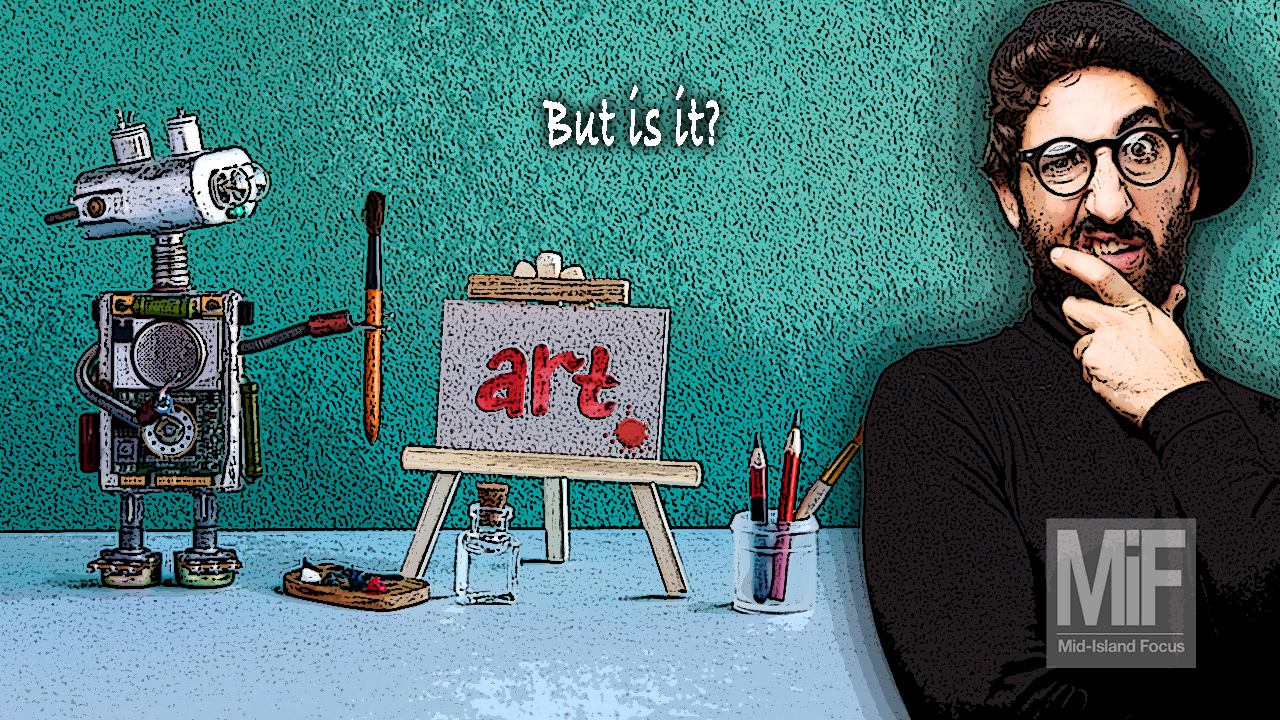
I have to put a disclaimer on top of this post, because I’m a writer and my partner Diana Durrand is an artist. So, if what follows seems slanted, all I have to say is: It’s about bloody time somebody slanted things in favour of Canada’s artists, who have been, for a long time, at the wrong end of a very long table, where everyone else gets served first… CS
Citizen X is Mid-Island Focus’s survey of issues heading into the Oct. 21 Canadian Federal Election. MiF is providing background and asking questions a typical voter might ask.
Painters, musicians, dancers, writers, actors – all those captured under the term ‘artists’ in its broadest sense – have much to be grateful for. The federal government’s contribution to the Canada Council for the Arts has been increasing incrementally, with the goal of growing the CC’s ‘investments in the arts’ to $310 million annually as part of its five-year strategic plan – that’s a doubling of funding for artists and arts organizations by 2021.

As part of that plan, the Canada Council has ‘drastically’ simplified programs and lightened ‘administrative processes’ so it will be able to channel ’88% of the federal government’s $550 million over five years directly into the arts sector.’
A bit of redistribution is taking place, too. New recipients will be eligible for 25% of the funding, indigenous peoples’ art funding will be tripled, and $88.5 million will be channeled into initiatives to ‘increase the quality, range and sharing of art through digital’ means.
A lot of thought has gone into realigning priorities at Canada’s go-to national funding organization for Arts & Culture with the creative challenges and opportunities of the times. So would the arts community be pulling an Oliver Twist by begging “Please Sir, I want some more?”
Let’s look at the picture from a different perspective:
- $310 million is less than one tenth of one percent of the $355.6 billion 2019 federal budget;
- In an era of rapid technological and social change, it is increasingly difficult for individual artists to innovate and make a living;
- The world needs creative visions and challenging portrayals from outside the mainstream now more than ever.
So, on the one hand, it can be argued that significant increases in arts funding have been put on the table; on the other, a case can be made for continued and increased investments, if we want to sustain a vibrant, stimulating arts sector.
Another area where the federal government could make a significant difference is amendments to the Canadian Copyright Act, which is currently under review. This is an incredibly complex and contentious process, but one thing is clear: artists – particularly literary and visual artists – do not feel well-served by the current Act.
One idea that has been proposed is secondary royalties for artists on resale of copyrighted works. Books, for instance, are resold much faster these days than was ever the case a quarter century ago. Online resellers like Amazon are flogging used copies of recent releases before the appies have been digested at the official book launch.
Writers do not receive royalties on those resales, but the of new books is almost certainly dampened when used copies flood the online shelves before the bloom is off.
Painters and other visual artists often have to sell their works at less than subsistence rates when they are unknown, only to see the same works sell at inflated values after the artists have achieved recognition. A secondary royalty on resale would ameliorate that situation.
Nothing’s ever simple when it comes to the arts economy in general, copyright in particular, but…
CitizenX would like to know:
- Would your party likely reduce, maintain or seek to improve Arts & Cultural funding during its mandate? How?
- Do you and your party believe mechanisms have to be considered to ensure artists are fairly compensated for their work?

